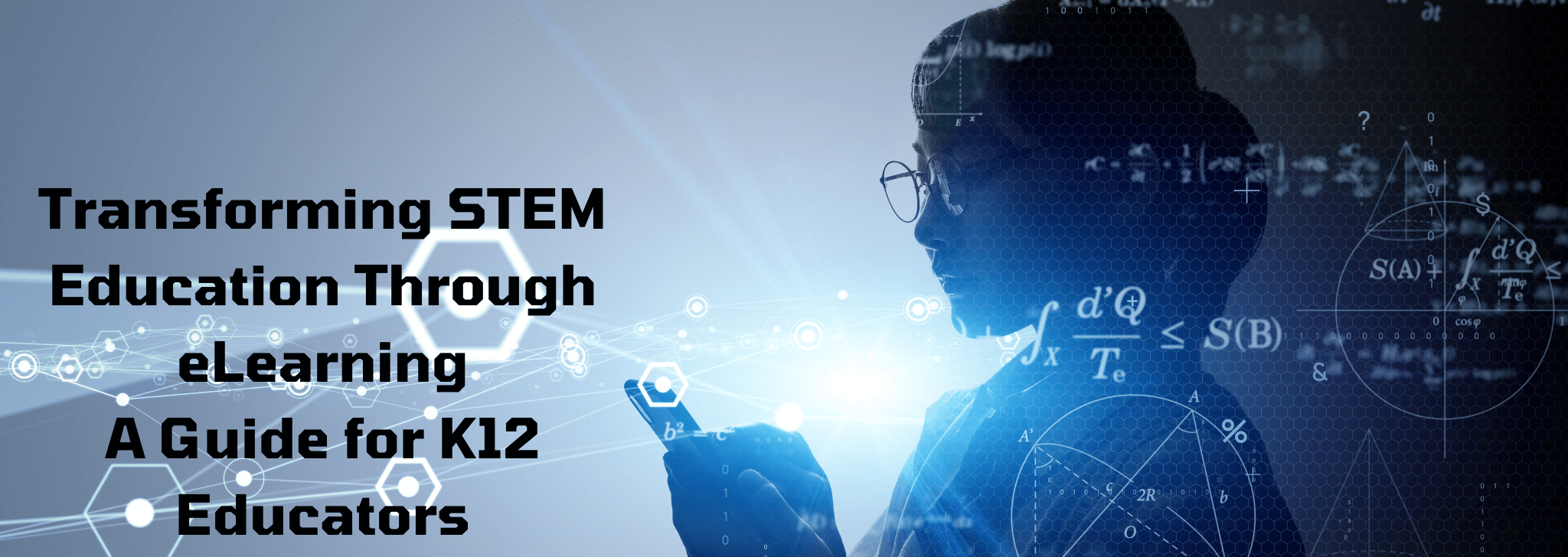Transforming STEM Education Through eLearning: A Guide for K12 Educators
Introduction
STEM education—Science, Technology, Engineering, and Mathematics—has always been a driving force behind innovation and progress. However, traditional teaching methods often struggle to keep up with the rapidly evolving nature of these disciplines. Enter eLearning: a transformative approach that enhances STEM education by making it more interactive, engaging, and accessible. This guide explores how eLearning is reshaping STEM instruction for K12 educators, providing insights, tools, and strategies to maximize learning outcomes.
The Role of eLearning in STEM Education
The integration of eLearning into STEM education allows educators to bridge gaps in engagement, accessibility, and hands-on experience. Here’s how:
- Enhanced Engagement: Gamification, interactive simulations, and multimedia content make learning more engaging.
- Accessibility: Digital platforms remove barriers, allowing students from diverse backgrounds to access high-quality STEM education.
- Practical Application: Virtual labs, coding platforms, and collaborative tools bring real-world STEM applications into the classroom.
A successful eLearning STEM curriculum depends on the right tools. Some of the most impactful tools include:
- Virtual Labs: Platforms like PhET Interactive Simulations and Labster allow students to conduct experiments in a risk-free digital environment.
- Coding Platforms: Websites such as Scratch, Tynker, and Code.org introduce students to programming in a fun and interactive way.
- Adaptive Learning Software: AI-driven platforms like DreamBox Learning personalize math and science lessons based on student progress.
Interactive simulations transform abstract STEM concepts into tangible experiences. Benefits include:
- Visualizing Complex Theories: Simulations help students understand molecular structures, physics principles, and engineering mechanics.
- Hands-on Learning Without Constraints: Students can experiment without the limitations of physical lab equipment.
- Instant Feedback and Adjustments: Adaptive simulations guide students toward correct conclusions with real-time responses.
Many students face barriers to STEM education, including geographic limitations, financial constraints, and learning disabilities. eLearning addresses these challenges by:
- Providing Low-Cost, High-Quality Resources: Open-source platforms and free educational tools widen access.
- Accommodating Diverse Learning Styles: Audio-visual elements, text-to-speech features, and interactive exercises support various learning needs.
- Connecting Students with Global Experts: Online platforms facilitate mentorship and virtual STEM communities.
Hybrid Classrooms: Blending Traditional and eLearning Approaches for STEM
Hybrid learning—combining in-person instruction with online resources—offers a balanced approach to STEM education. Key benefits include:
- Flexibility in Learning: Students can learn at their own pace through digital modules while engaging in hands-on activities in class.
- Greater Teacher-Student Interaction: Online assessments free up classroom time for discussions and problem-solving.
- Seamless Integration of Digital Tools: Educators can use AI-driven analytics to track student progress and tailor lessons accordingly.
Bringing STEM to Life: How eLearning Revolutionizes K12 Classrooms
A digitally enhanced STEM curriculum provides real-world applications of knowledge, including:
- Project-Based Learning: Encouraging students to work on real-world problems using eLearning platforms.
- Industry Partnerships: Virtual internships and guest lectures from STEM professionals expose students to career opportunities.
- Cross-Disciplinary Learning: Integrating STEM with arts, humanities, and social sciences to foster creativity and innovation.
The Role of Digital Collaboration Tools in STEM Projects for K12 Students
Collaboration is a critical skill in STEM fields. Digital tools facilitate teamwork through:
- Cloud-Based Workspaces: Platforms like Google Workspace and Microsoft Teams enable real-time collaboration.
- Virtual Whiteboards and Brainstorming Tools: Applications such as Miro and Jamboard support idea generation and problem-solving.
- Online STEM Communities: Students can participate in forums and global competitions to refine their skills and network with peers.
The integration of eLearning in STEM education is not just a trend—it is a necessity in preparing students for the future. By leveraging interactive tools, adaptive learning platforms, and digital collaboration, educators can make STEM subjects more engaging, inclusive, and effective. As technology continues to advance, the synergy between eLearning and STEM education will only grow stronger, shaping the next generation of innovators and problem-solvers.
Are you ready to accelerate STEM learning through eLearning? Explore the latest tools and strategies to revolutionize your classroom today!
- Debdut Pramanickhttps://www.mitrmedia.com/resources/blogs/author/debdutp/
- Debdut Pramanickhttps://www.mitrmedia.com/resources/blogs/author/debdutp/
- Debdut Pramanickhttps://www.mitrmedia.com/resources/blogs/author/debdutp/
- Debdut Pramanickhttps://www.mitrmedia.com/resources/blogs/author/debdutp/




